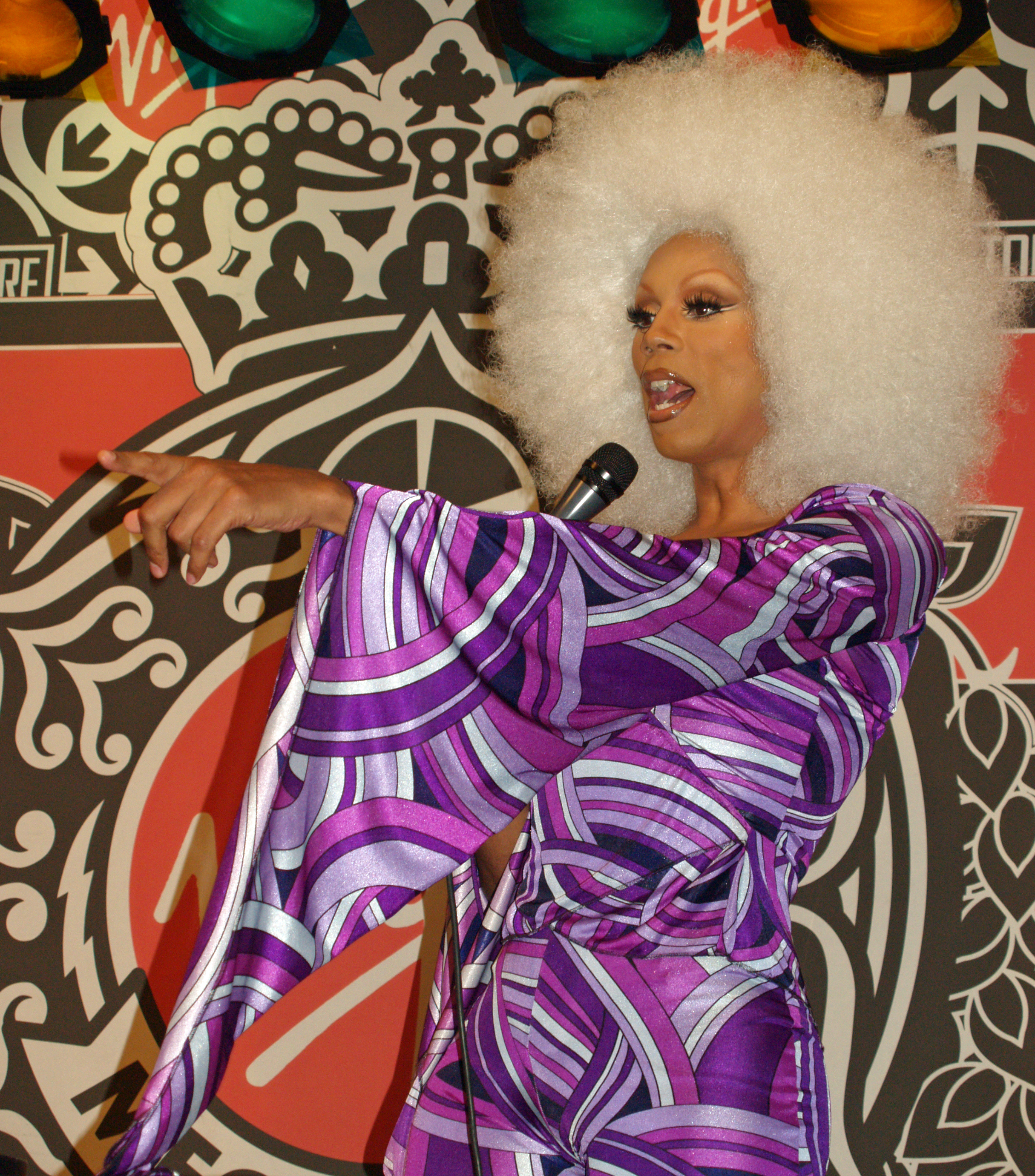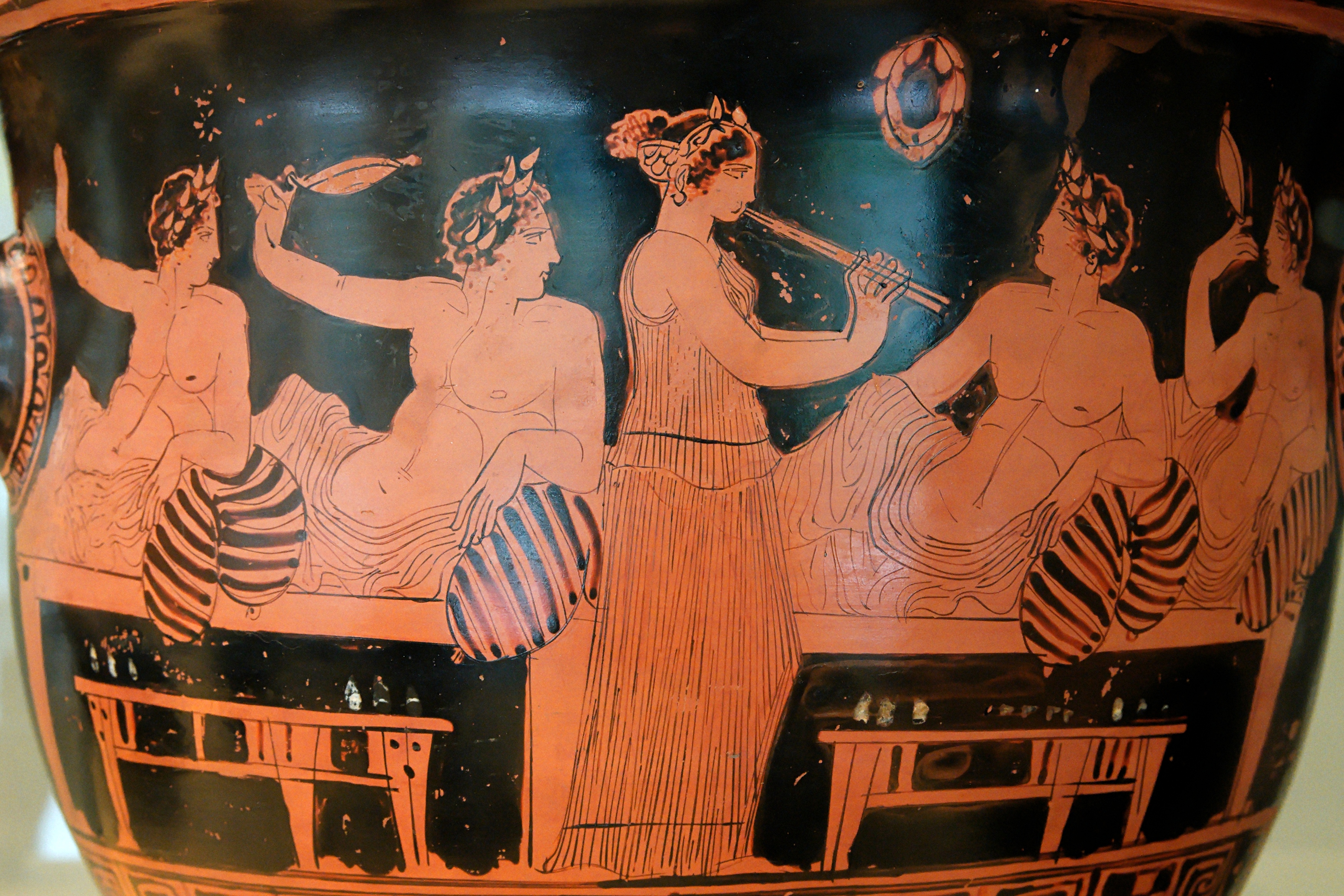|
Entertainer
An entertainer is someone who provides entertainment in various different forms. Types of entertainers * Acrobat * Actor * Archimime * Barker (occupation), Barker * Beatboxer * Benshi * Bouffon * Cheerleader * Circus arts, Circus performer * Clown * Host and hostess clubs, Club Hostess/Host * Comedian * Dancer * Drag queen * Drag king * DJ * Emcee * Model (person), Fashion model * Flair bartending, Flair bartender * Flatulist * Geisha * Geji * Go-go dancing, Go-go dancer * Harlequin * Magic (illusion), Illusionist * Impressionist (entertainment), Impressionist * Itinerant poet * Japanese idol * Jester * Kobzar * Korean Idol * Lirnyk * Magic (illusion), Magician * Master of ceremonies * Mime * Minstrel * Monologist * Musician * Party princess * Podcaster * Professional wrestling, Professional wrestler * Promotional model * Radio personality * Rapper * Rhapsode * Ring girl * Ringmaster (circus), Ringmaster * Scop * Shamakhi dancers * Showgirl * Showman * Showrunner * Singer ... [...More Info...] [...Related Items...] OR: [Wikipedia] [Google] [Baidu] |
Magic (illusion)
Magic, which encompasses the subgenres of close-up magic, parlor magic, and stage magic, among others, is a performing art in which audiences are entertained by tricks, effects, or illusions of seemingly impossible feats, using natural means. It is to be distinguished from Magic (supernatural), paranormal magic which are effects claimed to be created through supernatural means. It is one of the oldest performing arts in the world. Modern entertainment magic, as pioneered by 19th-century magician Jean-Eugène Robert-Houdin, has become a popular theatrical art form. In the late 19th and early 20th centuries, magicians such as John Nevil Maskelyne and David Devant, Howard Thurston, Harry Kellar, and Harry Houdini achieved widespread commercial success during what has become known as "the Golden Age of Magic", a period in which performance magic became a staple of Broadway theatre, vaudeville, and music halls. Meanwhile, magicians such as Georges Méliès, Gaston Velle, Walter R. B ... [...More Info...] [...Related Items...] OR: [Wikipedia] [Google] [Baidu] |
Flatulist
A flatulist, fartist, fartial artist, professional farter or simply farter is an entertainer often associated with flatulence-related humor, whose routine consists solely or primarily of passing gas in a creative, musical, or amusing manner. History There are a number of scattered references to ancient and medieval flatulists, who could produce various rhythms and pitches with their intestinal wind. Saint Augustine in '' The City of God (De Civitate Dei)'' (14.24) mentions some performers who did have "such command of their bowels, that they can break wind continuously at will, so as to produce the effect of singing." Juan Luis Vives, in his 1522 commentary to Augustine's work, testifies to having himself witnessed such a feat, a remark referenced by Michel de Montaigne in an essay. The professional farters of medieval Ireland were called braigetoír. They are listed together with other performers and musicians in the 12th century ''Tech Midchúarda'', a diagram of the banqu ... [...More Info...] [...Related Items...] OR: [Wikipedia] [Google] [Baidu] |
Drag Queen
A drag queen is a person, usually male, who uses Drag (entertainment), drag clothing and makeup to imitate and often exaggerate Femininity, female gender signifiers and gender roles for entertainment purposes. Historically, drag queens have usually been gay men, and have been a part of gay culture. People Drag (clothing), do drag for reasons ranging from self-expression to mainstream performance. Drag shows frequently include lip sync, lip-syncing, live singing, and dancing. They typically occur at gay pride parades, LGBTQ pride parades, drag pageants, cabarets, carnivals, and discotheque, nightclubs. Drag queens vary by type, culture, and dedication, from professionals who star in films and spend a lot of their time in their drag personas, to people who do drag only occasionally. Women who dress as men and entertain by imitating them are called drag kings. Those who do occasional drag may be from other backgrounds than the LGBT community. There is a long history of Drag (c ... [...More Info...] [...Related Items...] OR: [Wikipedia] [Google] [Baidu] |
Entertainment
Entertainment is a form of activity that holds the attention and Interest (emotion), interest of an audience or gives pleasure and delight. It can be an idea or a task, but it is more likely to be one of the activities or events that have developed over thousands of years specifically for the purpose of keeping an audience's attention. Although people's attention is held by different things because individuals have different preferences, most forms of entertainment are recognisable and familiar. Storytelling, music, drama, dance, and different kinds of performance exist in all cultures, were supported in Court (royal), royal courts, and developed into sophisticated forms over time, becoming available to all citizens. The process has been accelerated in modern times by an entertainment industry that records and sells entertainment products. Entertainment evolves and can be adapted to suit any scale, ranging from an individual who chooses private entertainment from a now enormous ... [...More Info...] [...Related Items...] OR: [Wikipedia] [Google] [Baidu] |
Model (person)
A model is a person with a Role (other), role either to display commercial product (business), products (notably fashion clothing in fashion shows) or to serve as an Model (art), artist's model. Modelling ("modeling" in British and American English spelling differences#Doubled consonants, American English) entails using one's body to represent someone else's body or someone's artistic imagination of a body. For example, a woman modelling for shoes uses her foot to model the potential customers' feet. Modelling thus is different from posing for portrait photography, portrait painting, and distinct from other types of public performance, such as acting or Dance, dancing. Personal opinions are normally not expressed, and a model's reputation and image are considered critical. Types of modelling include: fine art, Fashion modeling, fashion, Glamour modeling, glamour, fitness, and body-part Promotional modeling, promotional modelling. Models are featured in various media ... [...More Info...] [...Related Items...] OR: [Wikipedia] [Google] [Baidu] |
Korean Idol
An idol () is a type of entertainer who works in the field of Korean popular music (K-pop), either as a member of a group or as a solo act. They typically work for an entertainment agency that operates a highly managed star system that idols are produced by and debut under. Idols undergo extensive training in dance, vocal performance, and foreign language, and tend to represent a hybridized convergence of visuals, music, and fashion. Idols maintain a carefully curated public image and social media presence, and dedicate significant time and resources to building relationships with fans through concerts and meetups. History Trainee system Inspired by the heyday of MTV in the United States, Lee Soo-man, the founder of SM Entertainment set his sights on laying the foundation for the modern Korean pop music industry. He witnessed New Kids on the Block become very popular in Korea in the 1990s. In addition, he popularized the trainee business model from the Japanese idol indu ... [...More Info...] [...Related Items...] OR: [Wikipedia] [Google] [Baidu] |
Kobzar
A ''kobzar'' ( ; ) was an itinerant Ukrainian bard who sang to his own accompaniment, played on a multistringed kobza or bandura. Tradition The professional kobzar tradition was established during the Hetmanate Era around the sixteenth century in Ukraine. Kobzari were often blind and became predominantly so by the 1800s. ''Kobzar'' literally means ' kobza player', a Ukrainian stringed instrument of the lute family, and more broadly — a performer of the musical material associated with the kobzar tradition. Kobzari also played the bandura, an instrument which was likely developed from the kobza. Kozak Mamai and early origins Kozak Mamai ( Ukrainian: Козак Мамай) is a popular and iconic image that has many variants, but usually features a man sitting cross-legged and playing a kobza. The hairstyle is often a ''chupryna'' of Kozak style. Various items often surround Kozak Mamai including a horse, a tree, a rifle, a sword, and a gunpowder horn, and sometim ... [...More Info...] [...Related Items...] OR: [Wikipedia] [Google] [Baidu] |
Jester
A jester, also known as joker, court jester, or fool, was a member of the household of a nobleman or a monarch kept to entertain guests at the royal court. Jesters were also travelling performers who entertained common folk at fairs and town markets, and the discipline continues into the modern day, where jesters perform at historical-themed events. Jester-like figures were common throughout the world, including Ancient Rome, China, Persia, and the Aztec empire. During the Post-classical history, post-classical and Renaissance eras, jesters are often thought to have worn brightly coloured clothes and Cap and bells, eccentric hats in a motley pattern. Jesters entertained with a wide variety of skills: principal among them were song, music, and storytelling, but many also employed acrobatics, juggling, telling jokes (such as puns and imitation), and performing Magic (illusion), magic tricks. Much of the entertainment was performed in a comic style. Many jesters made contemporary ... [...More Info...] [...Related Items...] OR: [Wikipedia] [Google] [Baidu] |
Japanese Idol
An is a type of entertainer marketed for image, attractiveness, and personality in Japanese popular culture, Japanese pop culture. Idols are primarily singers with training in other performance skills such as acting, dancing, and modeling. Idols are commercialized through merchandise and endorsements by Talent agent, talent agencies, while maintaining a parasocial relationship with a financially loyal consumer fan base. Japan's idol industry first emerged in the 1960s and became prominent in the 1970s and 1980s due to television. During the 1980s, regarded as the "Golden Age of Idols", idols drew in commercial interest and began appearing in commercials and television dramas. As more niche markets began to appear in the late 2000s and early 2010s, it led to a significant growth in the industry known as the "Idol Warring Period." Today, over 10,000 teenage girls in Japan are idols, with over 3,000 groups active. Japan's idol industry has been used as a model for other pop idol in ... [...More Info...] [...Related Items...] OR: [Wikipedia] [Google] [Baidu] |
Itinerant Poet
An itinerant poet or strolling minstrel (also known variously as a gleeman, circler, or cantabank) was a wandering minstrel, bard, musician, or other poet common in medieval Europe but extinct today. Itinerant poets were from a lower class than jesters or jongleurs, as they did not have steady work, instead travelling to make a living. Medieval performers In medieval England, a gleeman was a reciter of poetry. Like a scop, a gleeman performed poetry to the accompaniment of a harp or " glee wood". Gleemen occasionally attached themselves to a particular court, but were most often ''wandering'' entertainers; this is unlike scops, who were more static. Gleemen were also less likely to compose or perform their own poetry and relied on the work of others for their material. A source cited that the number of itinerant poets were augmented by disgraced courtiers, clairvoyants, and even the deformed as these entertainers formed troupes and catered to the whims of individual patrons. ... [...More Info...] [...Related Items...] OR: [Wikipedia] [Google] [Baidu] |
Impressionist (entertainment)
An impressionist or a mimic is a performer whose act consists of imitating sounds, voices and mannerisms of celebrities and cartoon characters. The word usually refers to a professional comedian/entertainer who specializes in such performances and has developed a wide repertoire of impressions, including adding to them, often to keep pace with current events. Impressionist performances are a classic casino entertainment genre. Someone who imitates one particular person without claiming a wide range, such as a lookalike, is instead called an impersonator. In very broad contexts, "impersonator" may be substituted for "impressionist" where the distinction between the two is less important than avoiding confusion with the use of "impressionist" in painting and music. Usually the most "impressive" aspect of the performance is the vocal fidelity to the target – usually a politician or a famous person. Props may also be employed, such as glasses or hats, but these are now ... [...More Info...] [...Related Items...] OR: [Wikipedia] [Google] [Baidu] |
Harlequin
Harlequin (, , ; , ) is the best-known of the comic servant characters (Zanni) from the Italian commedia dell'arte, associated with the city of Bergamo. The role is traditionally believed to have been introduced by the Italian actor-manager Zan Ganassa in the late 16th century, was definitively popularized by the Italian actor Tristano Martinelli in Paris in 1584–1585, and became a stock character after Martinelli's death in 1630. The Harlequin is characterised by his checkered costume. His role is that of a light-hearted, nimble, and Tricky slave, astute servant, often acting to thwart the plans of his master, and pursuing his own love interest, Columbina, Columbine, with wit and resourcefulness, often competing with the sterner and melancholic Pierrot. He later develops into a prototype of the romantic hero. Harlequin inherits his physical agility and his trickster qualities, as well as his name, from a mischievous "Devil in Christianity#Early Middle Ages, devil" character ... [...More Info...] [...Related Items...] OR: [Wikipedia] [Google] [Baidu] |










